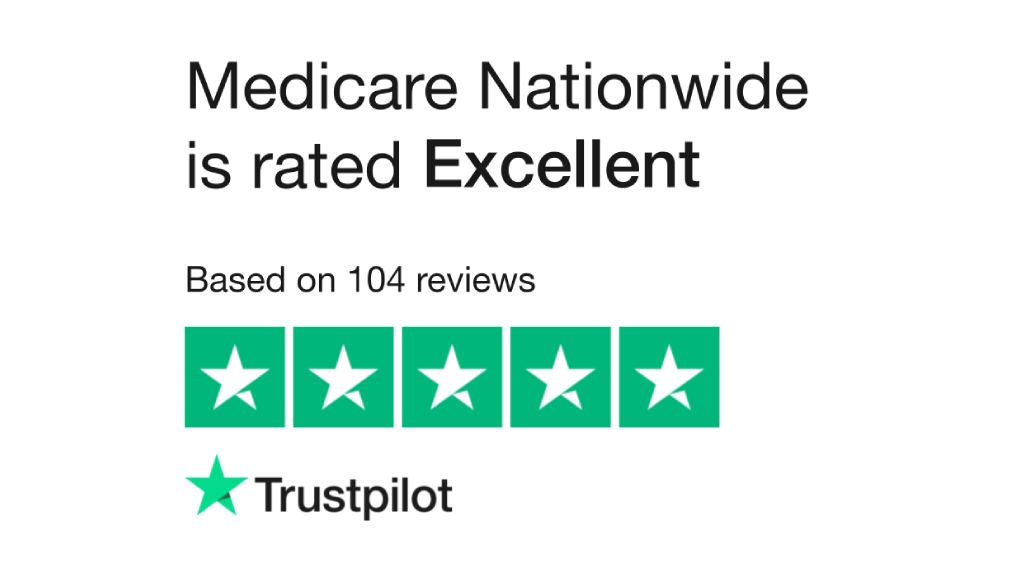What is Medicare Supplemental Insurance?

Medicare Supplement Insurance, known as Medigap, is a private insurance policy designed to cover some of the out-of-pocket costs associated with original Medicare. These costs can include co-payments, co-insurance, and deductibles.
In order to qualify for a Medigap policy, an individual must have Medicare Part A and Part B and not be enrolled in Medicare Advantage. There are a variety of Medigap policies identified by different letters, with each providing a different level of coverage. Each policy must adhere to federal and state standards and offer the same basic benefits (Massachusetts, Minnesota, and Wisconsin have their own standardization.
What Costs Does Medicare Supplemental Insurance Cover?
Medicare supplements cover costs such as:
- Part A coinsurance
- Hospital costs for an additional 365 days after Medicare benefits end
- Part B coinsurance or copayments
- The first three pints of blood if needed for transfusion
- Part A hospice care coinsurance or copayments
- Part A and Part B deductibles (new policies starting in 2021 will no longer cover Part B deductibles)
- Medical insurance in other countries should a person become ill during travel
Medigap policies do not cover costs such as vision and dental coverage, hearing aids, private-duty nursing, or long-term care. Individuals can purchase Medicare Supplement Insurance through a private insurance company that is licensed to offer Medigap policies. While each of the plans is standardized, premium costs vary by issuing company.
Medicare Supplement Insurance offers plans A, B, C, D, F, G, K, L, M, and N. Each plan offers different levels of standardized coverage and premium rates. Insurance providers are not required to offer every plan, so individuals may need to shop around for the ideal plan and best premium rates.
Benefits of Medicare Supplement Insurance
Medicare Parts A and B provide for basic healthcare to individuals over 65 and those with disabilities. While this basic coverage guarantees care, it can still be very costly. Healthy individuals who rarely see the doctor or experience any serious medical concerns may not worry too much about deductibles and copayments, making original Medicare enough coverage.
In many cases, however, individuals are just one major medical incident away from financial disaster. In this case, Medicare Supplement Insurance, or Medigap, can make all the difference.
Here are just some of the major benefits of supplement plans:
Medicare Supplement Insurance Plans Cover Deductibles and Copayments
Medicare provides coverage for both hospital care and doctor visits and services. However, coverage is not 100 percent. First, individuals must meet deductibles. For hospital visits, coverage doesn’t begin until an individual meets the deductible for each benefit period. These out-of-pocket expenses must be met before Medicare kicks in. Once met, hospital coverage is 100 percent for the first 60 days. For doctor visits and services, Medicare covers 80 percent, leaving individuals responsible for the remaining 20 percent.
For healthy individuals who only visit the doctor once or twice a year and do not require hospital stays, this can be affordable. However, one major medical incident can cost thousands. This scenario highlights that potential.
Patient A is in a major car accident and requires 200 days in the hospital. With original Medicare, this shows the hospital coverage and the out-of-pocket charges (these are just hospital costs and do not include doctor and additional service fees):
- Deductible out-of-pocket for each benefit period
- Medicare covers days one through 60 with full coverage
- Days 61 to 90 require a $419 per day coinsurance charge
- Days 91 through 150 require $838 per day coinsurance, plus use up your 60 lifetime reserve days
- Medicare does not cover days 151 to 200 at all, requiring an estimated cost of more than $4,000 per day
These high out-of-pocket expenses can bankrupt the average Medicare beneficiary. However, a standard Medicare supplemental insurance plan covers all the expenses, except the deductible. Additional plan options even cover the deductible, leaving Patient A with no out-of-pocket expenses.
This appointment is meant to alleviate any concerns and there is no-cost or obligation to make a change.
Additional Lifetime Hospital Days
As the patient scenario above shows, Medicare patients only receive 60 lifetime reserve days for hospital coverage. These days kick off on the 91st day of a hospital stay in each benefit period. The standard Medigap policy adds an additional 365 lifetime hospital days at full coverage, providing a safety net of hospital coverage.
Guaranteed Renewability and Coverage
Individuals are guaranteed approval for a Medigap policy in two situations. The first is during the initial Medicare Supplement Open Enrollment Period (OEP). This occurs when a person is 65 or older and enrolled in Medicare Part B. This period lasts for six months. The second situation occurs when individuals experience guaranteed-issue rights. These include a trial right period or at times when an individual loses health insurance due to the loss of employer-sponsored medical coverage or a move out of a coverage area. At any other time, policy approval may be subject to medical underwriting and pre-existing conditions.
Once you have a Medigap policy in place, the policy is guaranteed renewable as long as premium payments are paid. This means that, should a patient’s health decline or the need for medical care increase, they cannot be denied plan renewal.
Patients Have a Choice for Treatment
Unlike Medicare Advantage plans that often require in-network physicians and medical centers, Medicare Supplement Insurance works with any doctor and medical facility that accepts Medicare. There is also no need to receive referrals from medical specialists. This often benefits snowbird seniors who travel during retirement or live in two states throughout the year. No matter where a beneficiary is in the United States, individuals have access to covered medical care without the worry of additional out-of-pocket expenses.
Ability to Travel Abroad with Peace of Mind
For Medicare beneficiaries who travel abroad and worry about medical care, certain Medicare supplemental policies cover 80 percent of foreign travel emergency medical care. This coverage requires a deductible before the 80 percent is paid and leaves the patient with a 20 percent out-of-pocket cost. This coverage offers a $50,000 maximum lifetime benefit.
Eliminates Confusing Medical Claims Paperwork
No one wants to file paperwork every time they go to the doctor or hospital for medical care. With Medicare supplement insurance, there is no need to file claims because Medicare and the Medigap provider work together through a crossover system. When a patient receives medical care, the provider submits the claim paperwork directly to Medicare. Medicare pays its portion and submits the remainder directly to the Medigap policy provider. Once received, Medigap submits payment directly to the medical provider. When everything is paid, the patient receives an Explanation of Benefits statement from the Medigap provider showing the total payments and coverage.
How Much Can Medigap Really Save?
Medigap can really save individuals thousands of dollars. As pointed out in the previous patient scenario, Medicare Supplement Insurance, or Medigap, can save hundreds of thousands of dollars when a long-term medical condition or complication occurs. However, it continues to save hundreds and thousands of dollars on a regular basis for patients every year.
A 2018 report from the Kaiser Family Foundation shows that about half of all Medicare beneficiaries live on an annual per capita income of less that $26,000. In many cases, out-of-pocket medical expenses consume up to 41 percent of this income. Medicare Supplement Insurance helps reduce out-of-pocket costs.
As the scenario above showed, patients with Medicare must pay the hospital deductible for each benefit period, not per year. What does this mean? A hospital benefit period begins the moment a hospital admits someone. This benefit period ends when an individual goes 60 days without staying in a hospital. For example, Patient B is admitted in January for 5 days. The patient pays the deductible and Medicare covers the remaining costs for that hospitalization.
In April, the same patient must be hospitalized for another 10 days. Because this admission is more than 60 days after their previous hospital discharge, they must pay another deductible. Just four short-term hospital stays in one year could cost Patient B $5,632 in out-of-pocket deductibles. A Medigap policy covers each of these deductibles, saving the patient thousands of dollars.
But this is only the hospital portion of the year. In between each of these hospitalizations, Patient B sees the doctor on a weekly basis and undergoes a variety of expensive medical tests. Without a Medigap policy, this patient is responsible for 20 percent of these medical visits and procedures. That can add up to hundreds or thousands of dollars. Medigap covers these coinsurance costs, again saving Patient B from out-of-pocket costs.
How is Medigap Different Than Medicare Advantage?
There are many ways that Medigap is different than Medicare Advantage. Medigap works to cover the out-of-pocket costs associated with original Medicare Parts A and B. It is a supplement to this coverage. Medicare Advantage plans, often called Medicare Part C, is an all-in-one alternative to traditional Medicare coverage and similar to traditional private insurance.
Medicare Advantage plans work as a bundled healthcare plan, combining Parts A, B, and D. It is offered through a private insurance company. In most cases, all medical coverage is in a specific network of doctors and often requires referrals and approvals for medical specialists.
In addition to standard Medicare-covered services, many Medicare Advantage Plans also cover vision, hearing, dental, and other medical expenses not normally covered through original Medicare. If the plan deems a treatment not medically necessary, it can deny coverage and leave the patient to cover all costs.
In many cases, this leaves sicker patients scrambling for the healthcare they need and can afford. For many, this means canceling a Medicare Advantage plan in favor of another option, such as Medicare Supplement Insurance.
A 2017 report by the Government Accountability Office found that sicker patients experiencing difficulty with access to preferred doctors and hospitals dropped Medicare Advantage than those who are healthier.
While Medicare Advantage plans may offer more services, an individual is more likely to incur out-of-pocket expenses, such as co-pays. Patients are also limited to the doctors they can see, whereas patients with Medicare supplemental insurance have access to any provider that accepts Medicare.
This appointment is meant to alleviate any concerns and there is no-cost or obligation to make a change.
Things to Consider When Deciding Between Medigap and Medicare Advantage
Some key things to consider when comparing Medicare Supplement Insurance and Medicare Advantage are:
- Costs – Medigap monthly premiums typically run higher than Medicare Advantage. For healthy individuals, Medicare Advantage provides a less expensive monthly option despite the out-of-pocket expenses and co-payments. However, those with medical conditions requiring regular care or treatments, the higher premiums of Medigap without the excess charges of copays may be more beneficial.
- Medical Providers – Individuals with Medicare Supplement Insurance can choose which doctors they see and do not need referrals for specialists. This is important for those with established medical providers. With Medicare Advantage, care is often limited to a specific network of providers and out-of-network care may not be covered.
- Regular Travel During Retirement – In most cases, Medicare Advantage plans operate within a specific network and location. For retirees who winter in warmer states, this can create medical care gaps as treatments are not covered in different locations. In contrast, Medigap coverage works with all physicians who provide Medicare services, so individuals have the freedom to travel without the fear of out-of-pocket medical costs. This includes coverage outside the United States as well.
Prefer to chat by phone? Give us a call at 1-888-559-0103.


